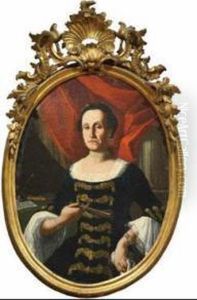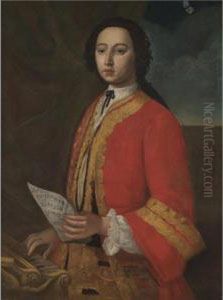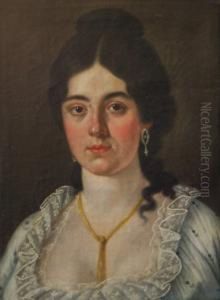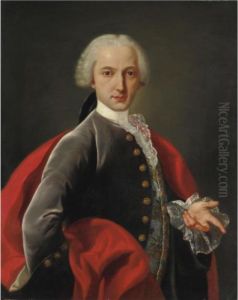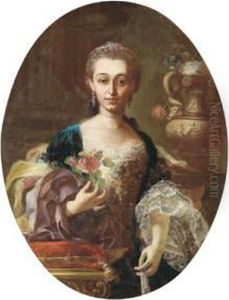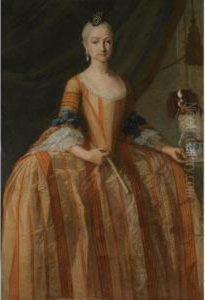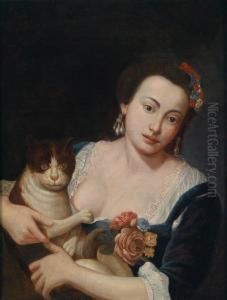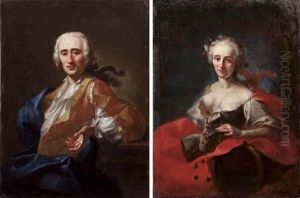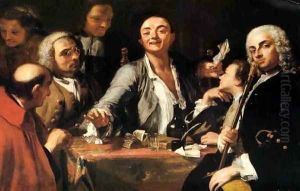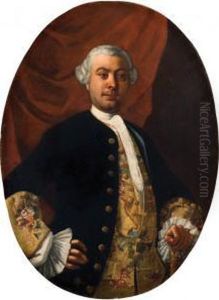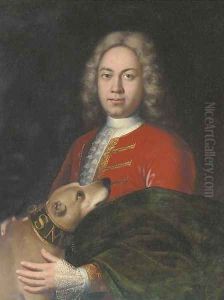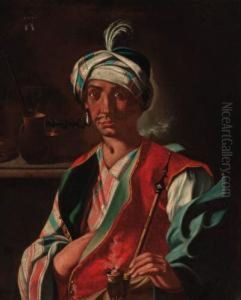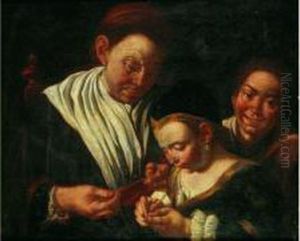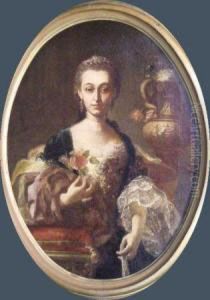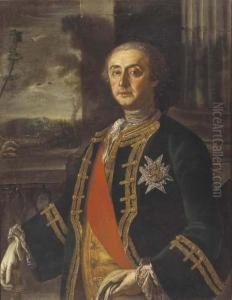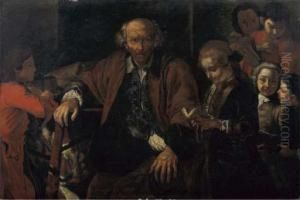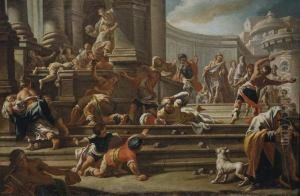Giuseppe Bonito Paintings
Giuseppe Bonito was an Italian painter active during the Rococo period. He was born in 1707 in Castellammare di Stabia in the Kingdom of Naples. Bonito is known for his portraits and genre scenes that reflect the Neapolitan society of his time. His work was characterized by a realistic style that captured the expressions and daily life of his subjects with a certain warmth and immediacy.
Bonito trained under the Neapolitan painter Francesco Solimena, who was one of the most prominent and influential artists in Naples during the early 18th century. Under Solimena's guidance, Bonito developed his skills, particularly in the realm of portraiture. He eventually gained recognition for his own style, which, while influenced by his teacher, was distinguished by its more down-to-earth portrayal of subjects.
Throughout his career, Bonito received numerous commissions from the Neapolitan aristocracy and religious institutions, which were attracted to his ability to convey their likenesses with both elegance and psychological depth. However, despite his success with the upper classes, Bonito also chose to depict ordinary people from the streets and markets, capturing the vibrancy of Neapolitan life.
Bonito's genre paintings often included popular figures from the Commedia dell'arte, a form of theater characterized by improvised dialogue and a cast of colorful characters that was immensely popular in Italy at the time. These works are particularly valued for their historical significance as they provide insight into 18th-century Neapolitan culture and society.
Later in his career, Bonito was appointed as the director of the Royal Academy of Fine Arts in Naples, where he influenced a new generation of Neapolitan artists. His legacy is preserved in the collections of various museums, and his works continue to be studied for their contribution to the Rococo movement and their depiction of 18th-century Neapolitan life.
Giuseppe Bonito died in 1789, leaving behind a significant body of work that offers a window into the world of 18th-century Naples. His paintings remain a testament to the skill and charm of one of southern Italy's most noteworthy artists of the Rococo era.


